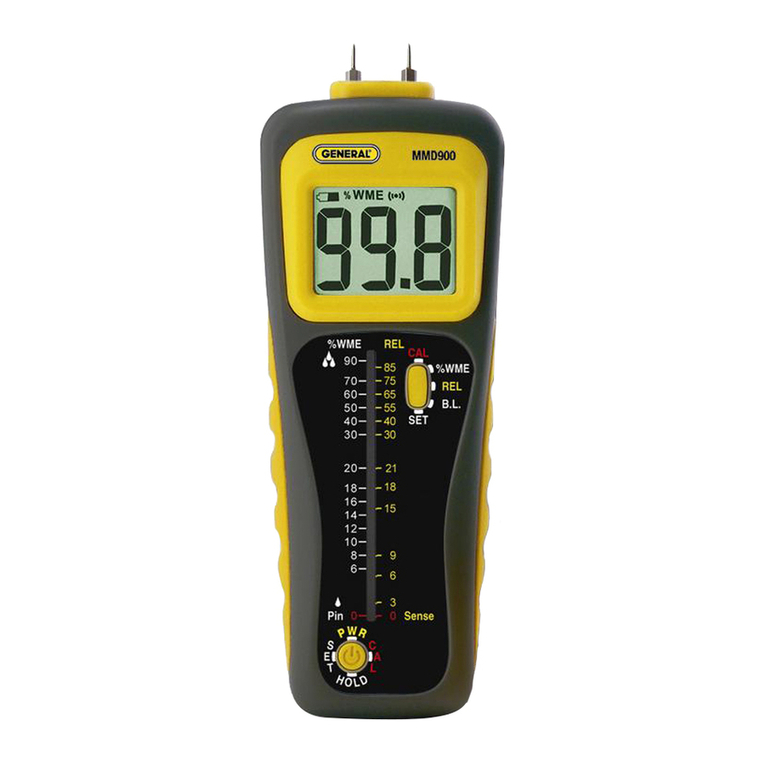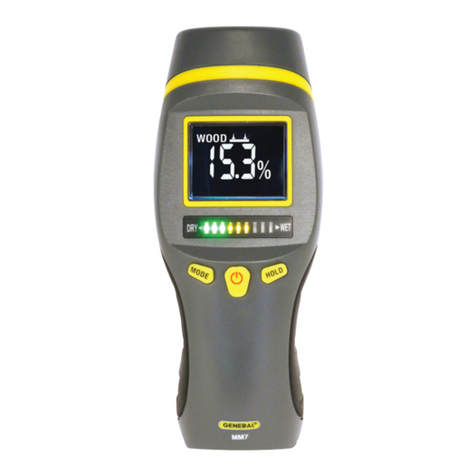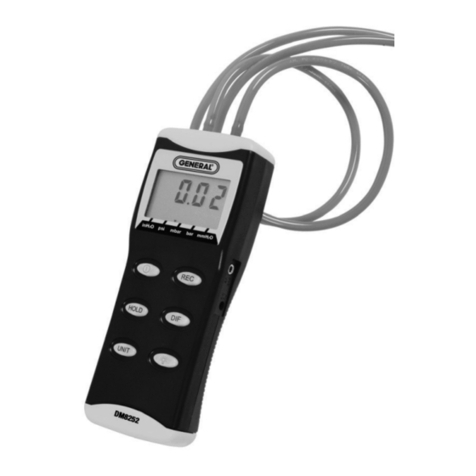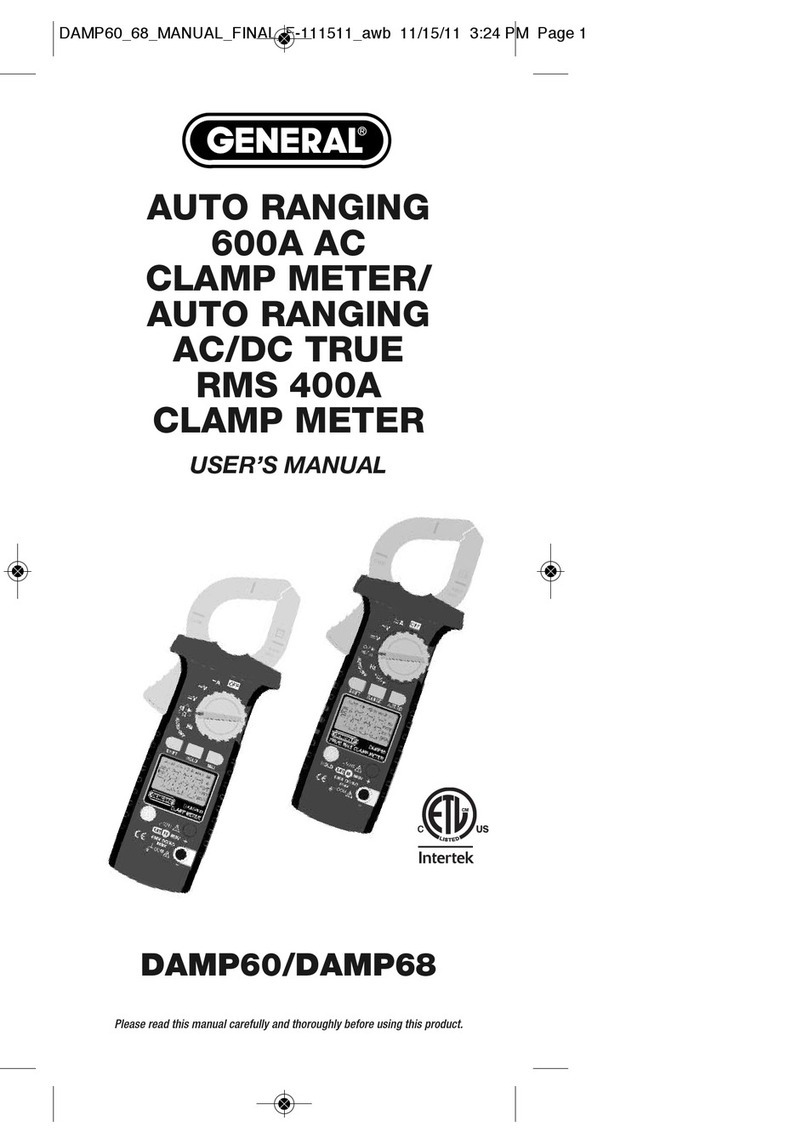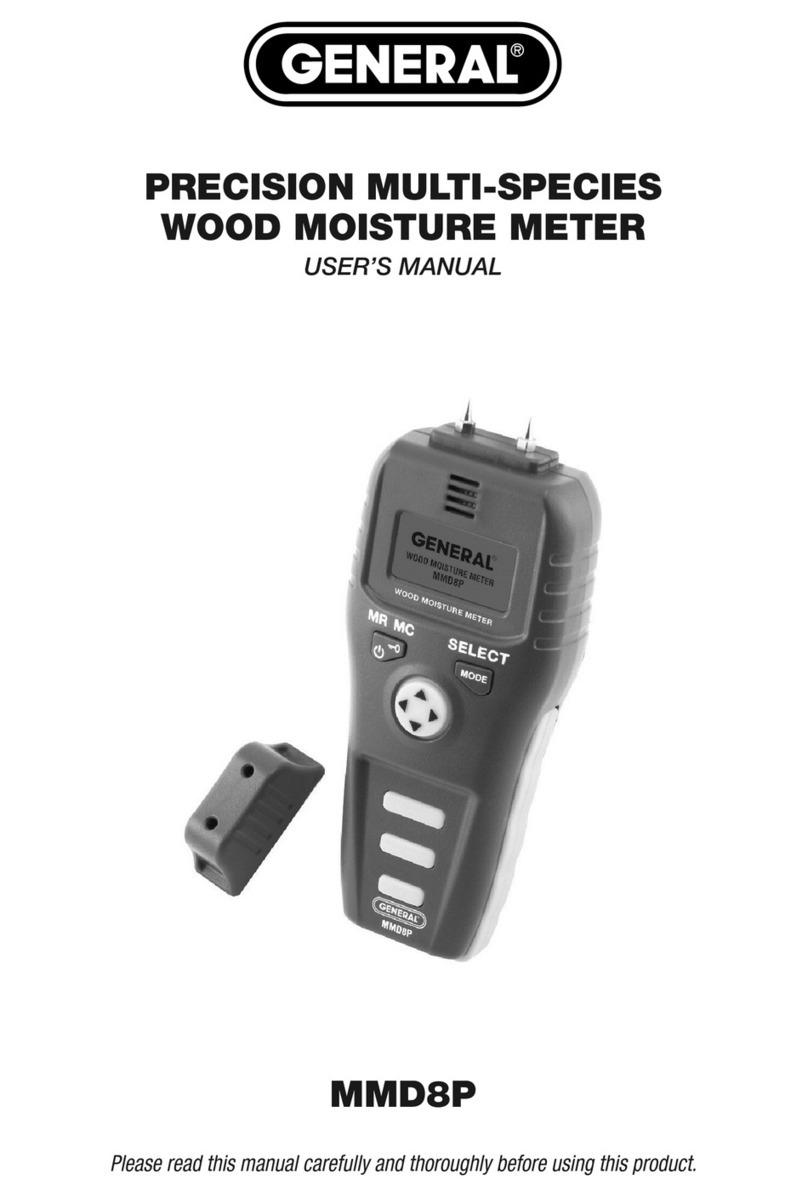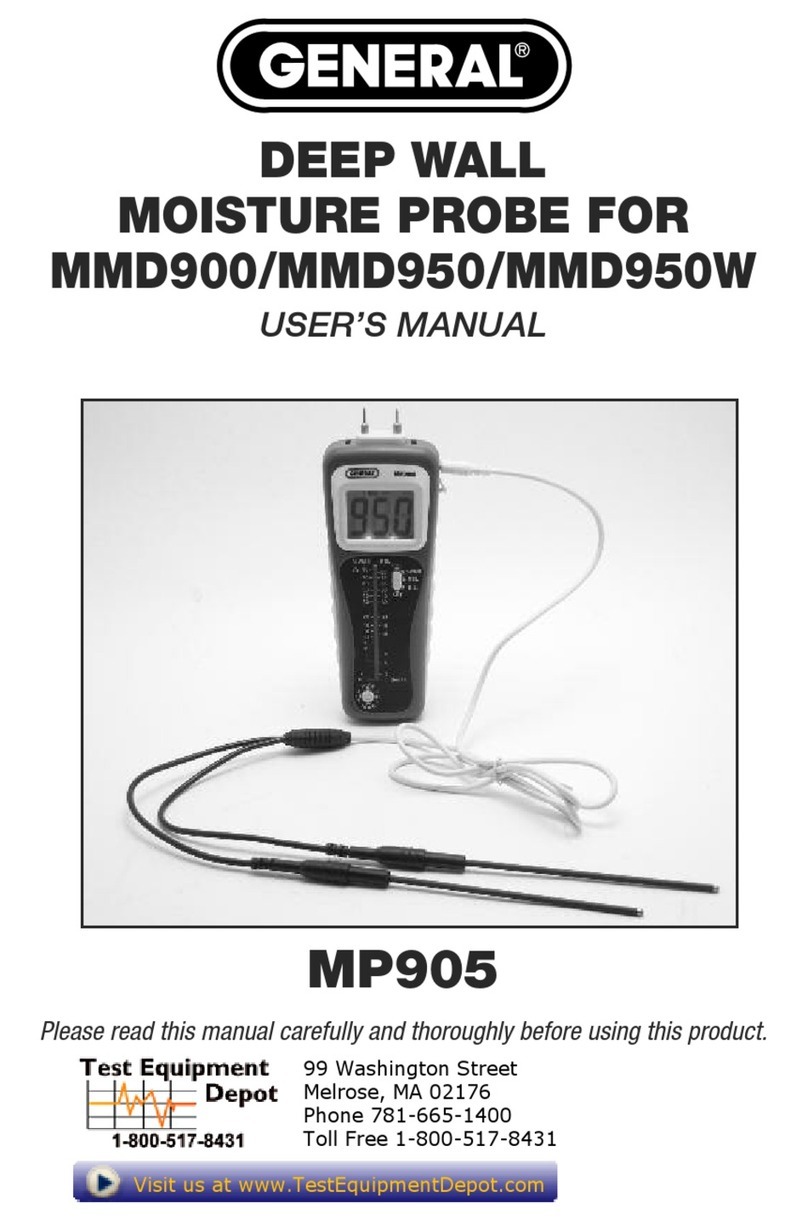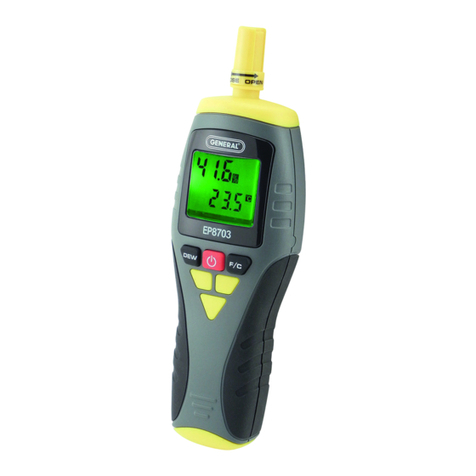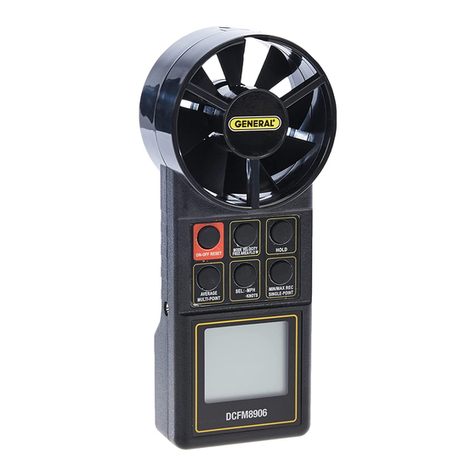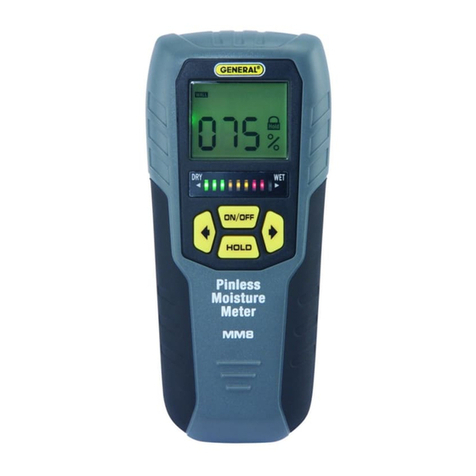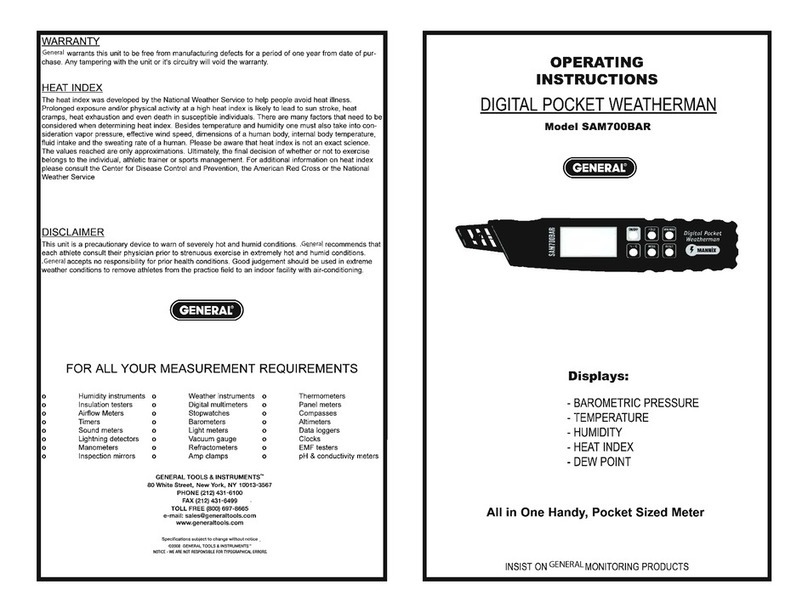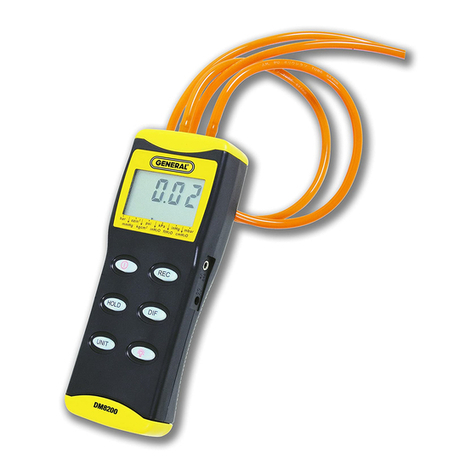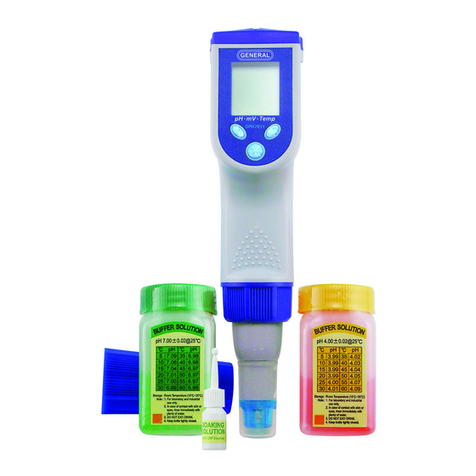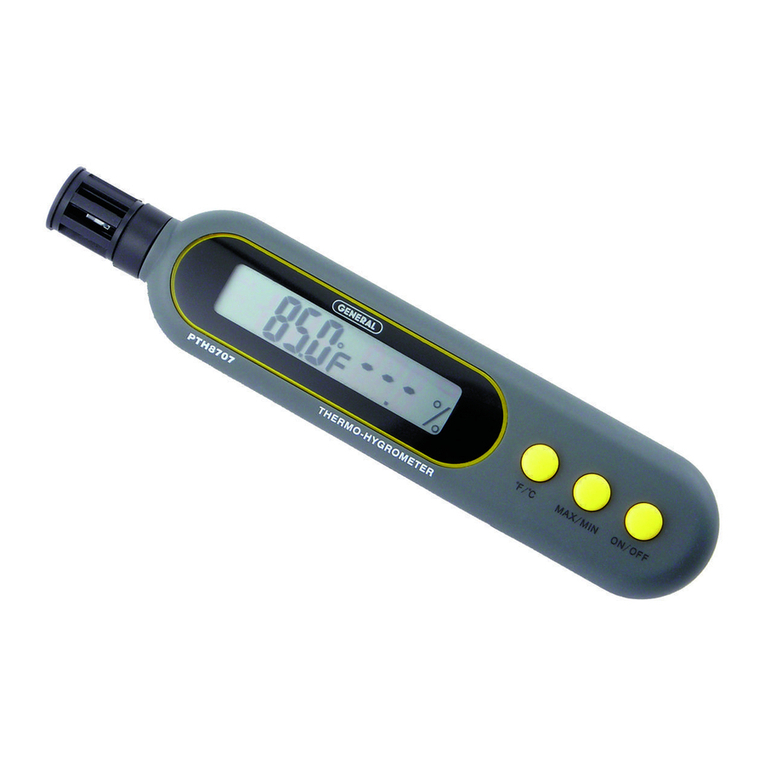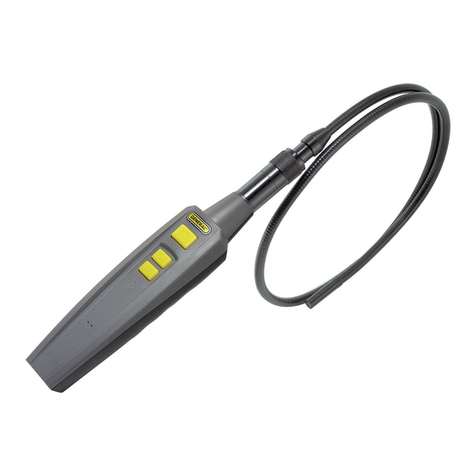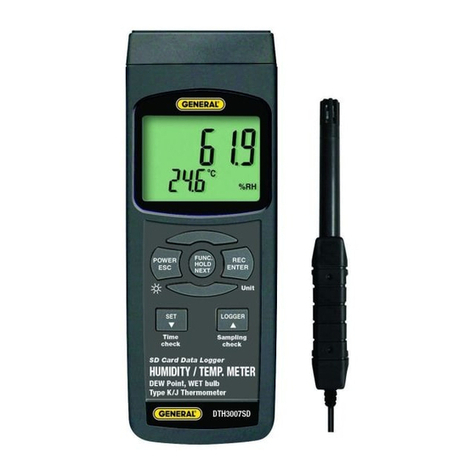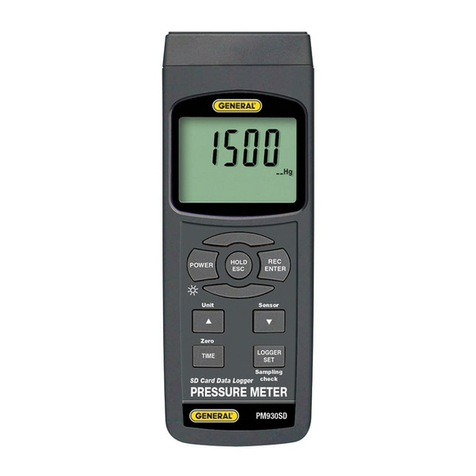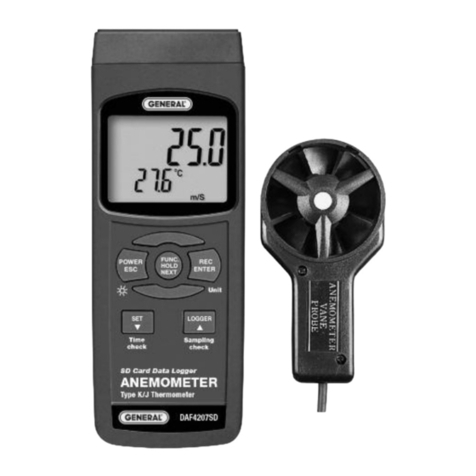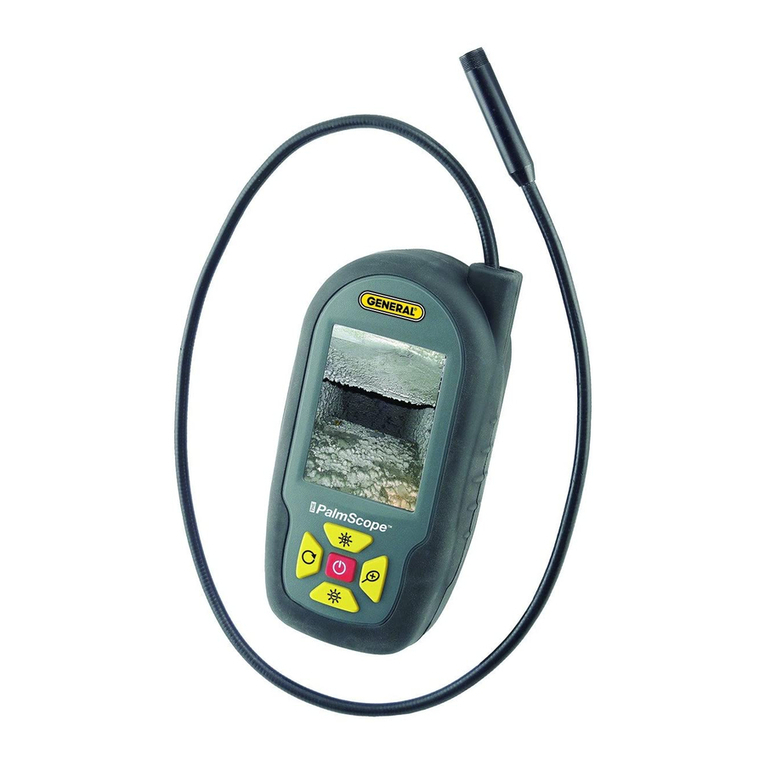capacitance of that material (as well as any material behind it) distorts the
wave’s electric field to a measurable extent.
The distortion of the field is sensed by a coil in the MSV100. nduction—the
second phenomenon—causes current to flow in the instrument in direct
proportion to how much the wave is distorted. The MSV100 uses the
relationship between current flow and the presence (or absence) of material
within the instrument’s local field to make two precise determinations. One is
the thickness of the surface behind the back of the instrument when placed
against it. This inferred measurement of thickness is used to adjust the
sensitivity of the MSV100’s induction circuit, in effect calibrating the detector to
the test environment. Different baseline sensitivities are used for wood and
metal.
Once you have calibrated the detector in this way, you continue holding the
back of the instrument against the surface and continue pressing the PUSH
button while slowly moving the detector to the left in an area where a stud, joist
or metal rod may be. There will be an abrupt change in the level of induced
current as you pass the edge of any hidden wood or metal. This is the second
determination—the position of the right edge of a wood or metal object.
Repeat the procedure, but now moving to the right, and the MSV100 will again
detect a change in induced current. However, this time the change will be at the
left edge of the hidden wood or metal. By using a pencil and the MSV100’s
marker slot and “peak” central arrow to mark the left and right edges, you can
precisely locate the center of any wood or metal stud or frame, wood joist, or
metal pipe or conduit.
Using induction alone, the MSV100 can also identify “live” (energized) AC
outlets and locate hidden “hot” wires and outlets. This is not only convenient,
but essential to safety. On jobs ranging from installing a through-the-wall air-
conditioner to renovating a house with new wiring and plumbing, it is vital to
know the locations of existing electrical cables and wires and metal pipes
carrying water or gas. Without access to the building’s construction drawings,
there is no way to be sure that an action as simple as driving a nail into a wall
will not produce an electric shock—or far worse.
Regardless of which mode it is operating in, the MSV100 will display the
familiar Ꮨicon whenever it detects AC voltage. t’s critical to realize that AC
voltages as weak as 50V can be hazardous to your health.
3
